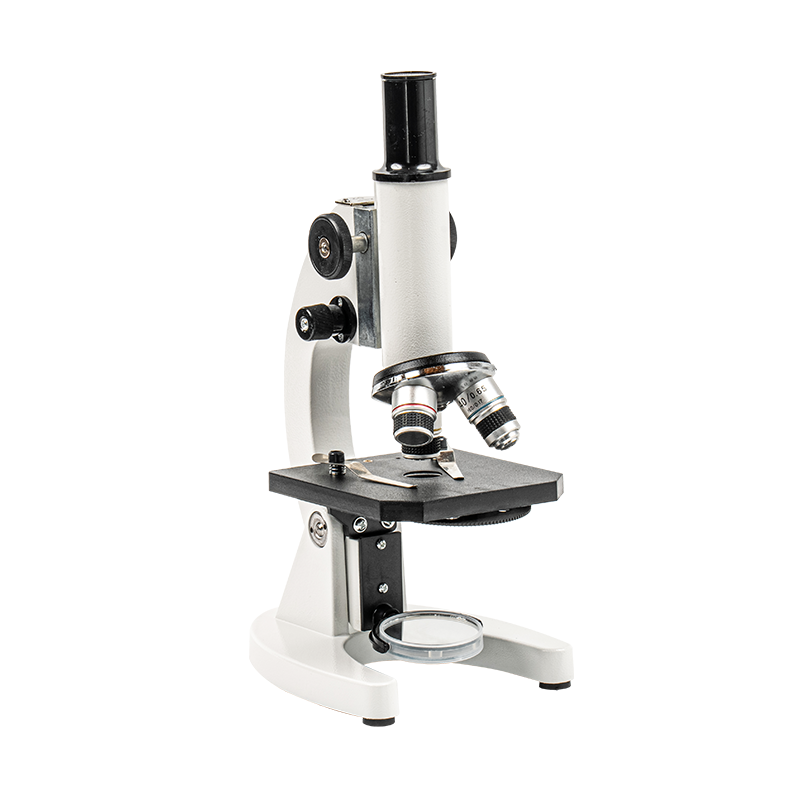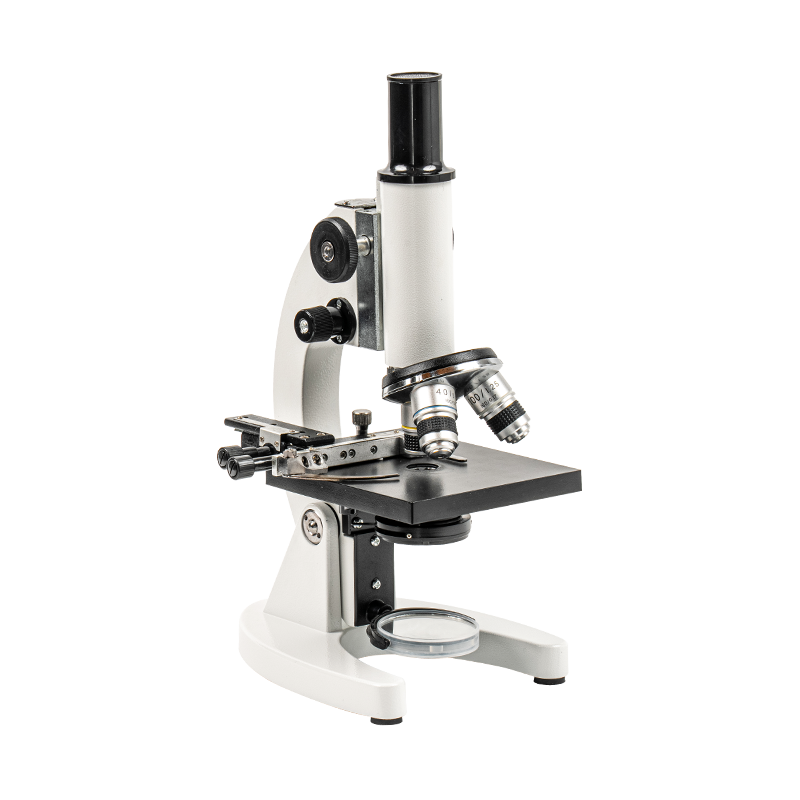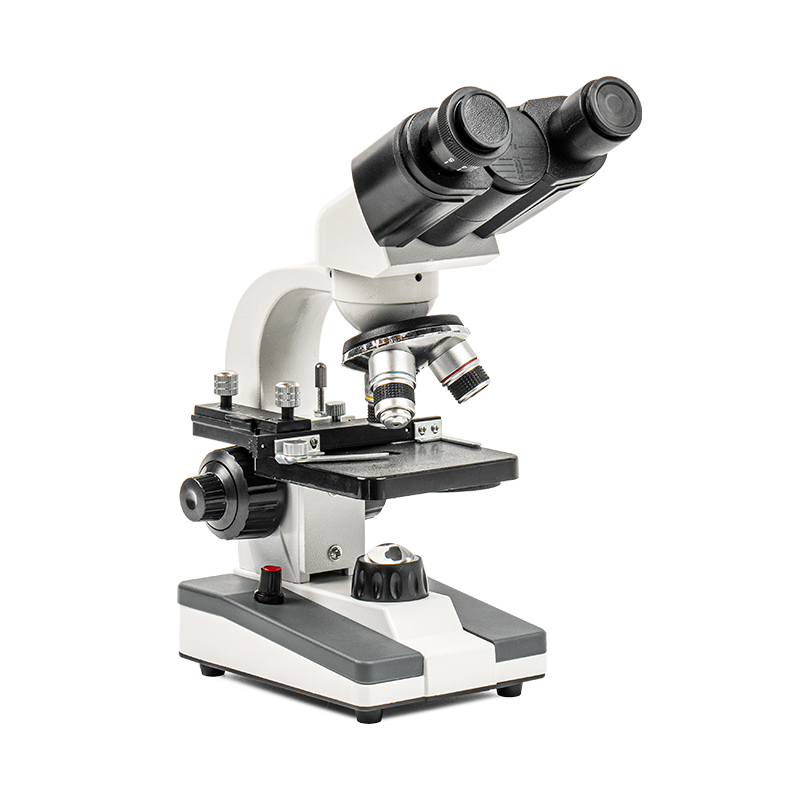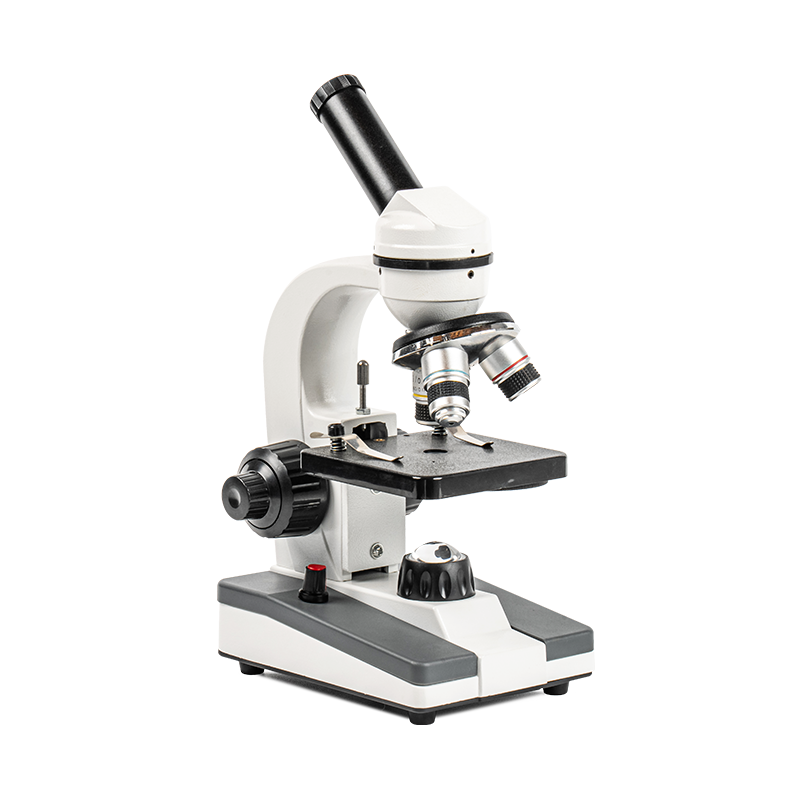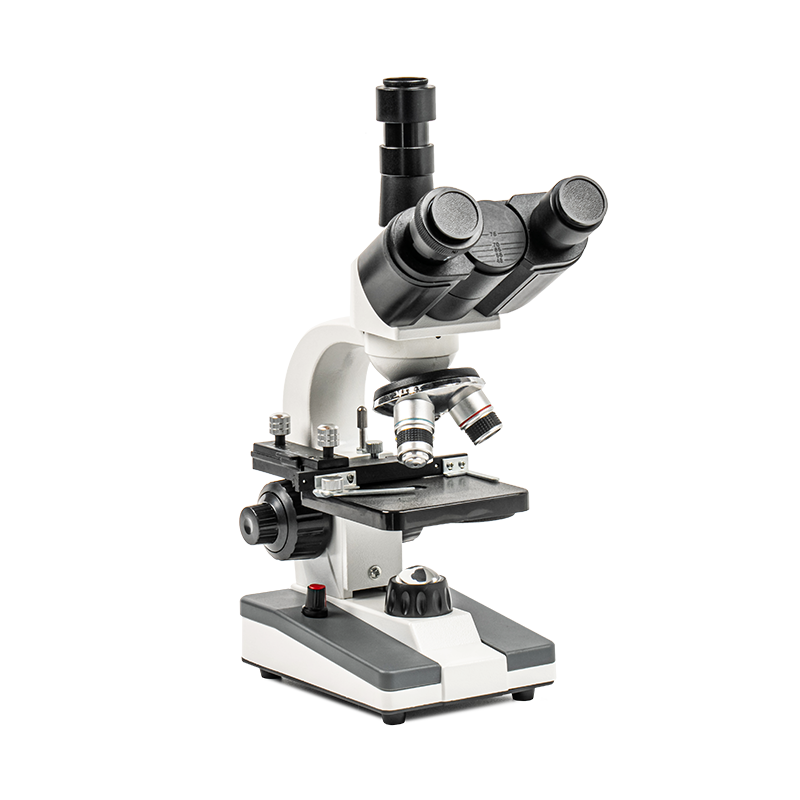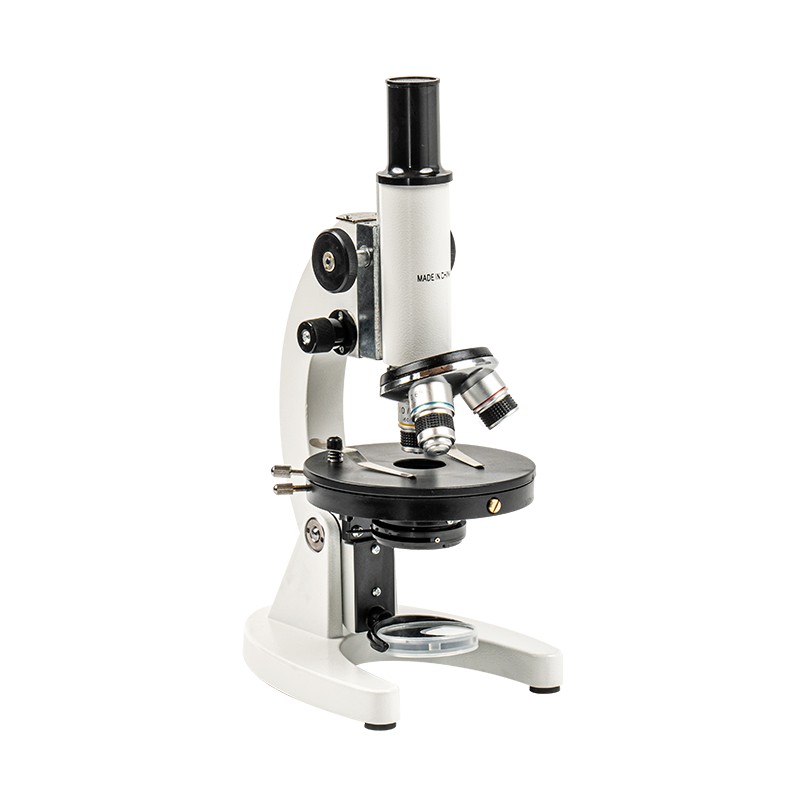In microscopic observation, focusing on tiny structures and details for a long time often requires researchers to maintain eye concentration and a fixed posture for a long time. Especially in experiments in the fields of biology and medicine, researchers may need to observe specimens in detail, which usually means using a microscope for a long time to focus, shoot and analyze. Although these observations are crucial, long-term overuse of eye concentration often causes eye fatigue, dryness, and even headaches, shoulder and neck discomfort, which may affect the continued progress of scientific research in severe cases.
Traditional binocular microscopes cannot effectively solve this problem in design. Due to their fixed observation light path and eyepiece layout, researchers usually need to work in a fixed posture for a long time, which makes the problems of eye fatigue and physical discomfort particularly prominent. The XSP-500SM Focusing Interval 0.002mm Trinocular microscope provides a more flexible and comfortable observation experience through its trinocular lens design, effectively reducing the fatigue caused by long-term observation.
The XSP-500SM Focusing Interval 0.002mm Trinocular microscope adopts a trinocular lens design, adding a third light path on the basis of the traditional binocular microscope. The core advantage of this design is that it can meet the multiple needs of researchers at the same time. The trinocular design allows the observation and data recording functions of the microscope to be carried out in parallel. During the long-term observation of samples, researchers can capture images through the independent channels of the trinocular lens without interrupting the observation process to switch. In this way, researchers can avoid the fatigue caused by frequent adjustments of the eyepieces and viewing angles, while ensuring the continuity of observation and recording.
The trinocular lens design allows users to adjust the line of sight and focus of the eyes more freely, reducing the burden on the eyes. Traditional binocular microscopes require observers to focus their eyes on a smaller range for a long time, while the trinocular design provides a wider viewing angle, allowing the eyes to switch appropriately between different angles and depths, reducing eye discomfort caused by staring at a small area for a long time.
The trinocular lens design of the XSP-500SM Focusing Interval 0.002mm Trinocular microscope effectively shares the burden on the eyes. Researchers can choose to use the main mirror or the auxiliary mirror to work during observation, which can avoid the continuous eye tension caused by a single viewing angle. The trinocular design allows the two eyes to be used alternately, thus avoiding the situation in which the two eyes are forced to focus for a long time in traditional microscopes. Alternating the eyepieces not only allows the eyes to rest, but also effectively disperses the focus of vision, thereby reducing eye fatigue caused by long-term concentration.
The flexibility of the trinocular design also helps researchers adjust the viewing distance during long-term observation and reduce overuse of eye muscles. For researchers who have been engaged in microscopic observation for a long time, adjusting the viewing distance is an important protective measure that can relieve eye fatigue and discomfort. This design of the XSP-500SM Focusing Interval 0.002mm Trinocular microscope allows researchers to maintain a comfortable working state for a long time even in a high-intensity experimental environment.
Long-term microscopic observation is not only a test for the eyes, but also a challenge for the body. Traditional microscopes require observers to operate in a fixed posture, which can easily cause fatigue in the shoulders, neck and back. Especially in research projects that require long-term observation, physical discomfort may affect the continuity and efficiency of the experiment. The trinocular design of the XSP-500SM Focusing Interval 0.002mm Trinocular microscope allows researchers to choose the most comfortable working posture according to their needs by providing multiple observation angles and flexible usage.
The design of the trinocular lens allows researchers to avoid the problem of lowering their heads or fixing their viewing angles for a long time, and adjust their posture at any time to maintain a good operating comfort. At the same time, the trinocular lens allows team members to participate in observation and discussion more easily. This design not only improves work efficiency, but also reduces the physical pressure of a single operator, making long-term experiments easier and smoother.
Microscope observation usually takes a long time, especially when performing detailed analysis and data recording, eye fatigue is often an unavoidable problem. However, if long-term eye fatigue is not relieved in time, it may affect the health of researchers and even cause long-term burden on the eyes. The trinocular design of the XSP-500SM Focusing Interval 0.002mm Trinocular microscope provides researchers with a healthier way of working by effectively sharing the burden on the eyes. The XSP-500SM Focusing Interval 0.002mm Trinocular microscope is designed with full consideration of eye health, especially for researchers who need to use the microscope frequently and for a long time. The trinocular lens design can effectively reduce eye fatigue and protect eye health. With flexible usage and comfortable observation experience, the XSP-500SM microscope improves scientific research efficiency and ensures the long-term health of researchers.

 English
English Español
Español عربى
عربى 中文简体
中文简体